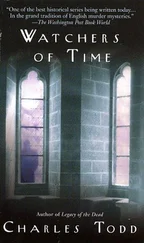Alexander Todd - A Time to Remember
Здесь есть возможность читать онлайн «Alexander Todd - A Time to Remember» весь текст электронной книги совершенно бесплатно (целиком полную версию без сокращений). В некоторых случаях можно слушать аудио, скачать через торрент в формате fb2 и присутствует краткое содержание. Город: Cambridge, Год выпуска: 1983, ISBN: 1983, Издательство: Cambridge University Press, Жанр: Химия, Биографии и Мемуары, на английском языке. Описание произведения, (предисловие) а так же отзывы посетителей доступны на портале библиотеки ЛибКат.
- Название:A Time to Remember
- Автор:
- Издательство:Cambridge University Press
- Жанр:
- Год:1983
- Город:Cambridge
- ISBN:0 521 25593 7
- Рейтинг книги:3 / 5. Голосов: 1
-
Избранное:Добавить в избранное
- Отзывы:
-
Ваша оценка:
- 60
- 1
- 2
- 3
- 4
- 5
A Time to Remember: краткое содержание, описание и аннотация
Предлагаем к чтению аннотацию, описание, краткое содержание или предисловие (зависит от того, что написал сам автор книги «A Time to Remember»). Если вы не нашли необходимую информацию о книге — напишите в комментариях, мы постараемся отыскать её.
A Time to Remember — читать онлайн бесплатно полную книгу (весь текст) целиком
Ниже представлен текст книги, разбитый по страницам. Система сохранения места последней прочитанной страницы, позволяет с удобством читать онлайн бесплатно книгу «A Time to Remember», без необходимости каждый раз заново искать на чём Вы остановились. Поставьте закладку, и сможете в любой момент перейти на страницу, на которой закончили чтение.
Интервал:
Закладка:
I need not detail here all the hectic and at times frenzied work during these two years in Edinburgh. Details of the work can be found in the literature. We were beaten to final synthesis, although only by a short head, by the Germans and Americans but our synthesis was not only quite different in concept from the others but proved to be sufficiently superior for it to be used by Hoffmann La Roche to take a major share of the world B1 market. I should add that, since my work was partly supported by the Medical Research Council, I was not allowed to patent anything. This attitude, I fear, cost the country - and probably me also - very large sums of money and this may have been, in part, responsible for a later change of heart by the Research Councils. It incidentally played a role in the creation, much later on, of the National Research Development Corporation. Through advance knowledge of our results, which we naturally supplied to them in gratitude for their assistance, Hoffmann La Roche were in a position to establish themselves in the field and to take advantage of the opportunity thus presented to them. I have never grudged them their success, and remain ever grateful for the help they gave me on vitamin B1 and on vitamin E where I had an exactly similar relationship with the firm. Hoffmann La Roche ever since those days have always been ready and willing to help me with grants or materials required for my research and always without commitment on my part. In my experience their behaviour has been a model for industry/university collaboration in general.
One or two recollections of the B1 work may be worthy of mention here. The first reveals another trait of George Barger. The first breakthrough in the structural work on vitamin B1 was made by R. R. Williams and the Merck group, who effected what has come to be known as the 'sulphite cleavage' and which yields a thiazole derivative together with a pyrimidine sulphonic acid. The result first appeared (I think in December 1934) as a paragraph in the New York Times in such a form that it was not wholly clear just what had been established. I can't remember now exactly how I got hold of this information, but I told Barger of its existence and he said I should draft a telegram to Max Bergmann at the Rockefeller Institute in New York and ask him to ascertain the facts and let us have some more detailed information. I accordingly drafted a telegram and showed it to Barger who almost exploded.' Todd,' he said, 'you are an unmitigated spendthrift; that telegram would cost us several pounds! Let me redraft it for you.' This he did, reducing it to about a dozen words and told me to despatch it. The following morning we received in return a telegram from Bergmann which read 'Cannot understand your communication. Please explain.' I then sent off my original version and got the required information much to Barger's chagrin! The delay between then and 1936 in establishing the true structure of the vitamin was due to an error made initially by all three groups working on it. The 'sulphite cleavage' was clearly fission of a quaternary ammonium salt. This was so unexpected that we all jumped to the entirely erroneous conclusion that the pyrimidine ring was directly linked to the quaternary nitrogen and that an ethyl group was attached to the pyrimidine ring system. It took nearly eighteen months for the German group to establish that in the pyrimidine sulphonic acid from the cleavage the sulphonic acid residue was attached through a CH2-group to position 5 of the pyrimidine ring system. It followed that there must indeed be a CH2-group between the pyrimidine ring system and the quaternary thiazole in the intact vitamin. Bergel and I, meanwhile, went directly for the erroneous formula by total synthesis, a difficult task in which we succeeded; as the product was not identical with the vitamin we could easily deduce the correct structure (which was one we had always regarded as a possible alternative) and we proceeded to synthesise it. The fact that we first had to synthesise the correct pyrimidine intermediate delayed us as compared with the others and left us a month or two behind the Germans and somewhat less behind the Americans; but on the other hand our prior work on the wrong B1 structure gave us a much more elegant vitamin synthesis. So, in the end, not a great deal was lost and we certainly could congratulate ourselves on our performance against two large and powerfully equipped organisations. The final clearing up was done after I moved to the Lister Institute in London in the autumn of 1936.
Towards the end of my Edinburgh period I also began preliminary work on vitamin E, although I only developed that work seriously after moving to London. However, my stay in Edinburgh had another, and indeed vital, consequence for my career. It was there that I first met a young lady, Alison Dale, who was doing postdoctoral research in the department of pharmacology under A. J. Clark. Pharmacology was next door to medical chemistry and I fear I spent quite a lot of time there. Suffice to say that by the time I left Edinburgh we were engaged to be married and did indeed marry in January 1937 after I had moved to London. That was perhaps the best thing I ever did, for my wife has always been a vital part of my career; to her I am forever grateful. Her father was Sir Henry Dale, the famous physiologist, and through her and her family I also met many people in the biomedical field, and these contacts have undoubtedly affected many of my scientific interests.
(As a good Scotsman I can record that my fiancee consented to become formally engaged while we were attending a meeting of the Biochemical Society in Aberdeen. I at once bought her an engagement ring at Woolworths in that city. Hardly were we back in Edinburgh when one of the 'diamonds' fell out of its setting. Ever free with cash, I told her to throw away the ring and then bought her another - in the Edinburgh branch of Woolworths!)
In the early summer of 1936 it was announced that J. M. Gulland, Reader in Biochemistry at the Lister Institute of Preventive Medicine, had been elected to the chair of chemistry at Nottingham and the head of the biochemistry department at the Lister, Robert Robison, began to cast around for a successor. His enquiries of Barger, Dale and Robinson brought up my name and no doubt I had the attraction of being (apart perhaps from Haworth and Hirst) the only chemist in Britain actively operating in the field of vitamins with which the Lister Institute had long been closely identified. After all, it was there that Casimir Funk coined the name 'vitamine' for the anti-beriberi factor, and Harriette Chick was in command of their large nutrition department. Be that as it may, I was asked to join the Institute in place of Gulland, although it was pointed out by Robison that, at 28, I was really too young to have the title of Reader which was accordingly withheld. I have often wondered if the withholding of the Readership was meant to be a smack in the eye for Robert Robinson who had been asked by the Lister for an opinion on me and my promise as a chemist. Many years later the correspondence relating to my appointment fell into my hands, including a letter from Robinson in which he said he had no doubt that my appointment would be good for the Lister, but was doubtful whether the Lister was good enough for me. These remarks were not well received in the Lister Institute, and perhaps they felt it was time Robinson was taken down a peg! Be that as it may, I was quietly and unobtrusively appointed to a Readership a few months after moving to the Lister. I moved down from Edinburgh with Franz Bergel, Anni Jacob and T. S. Work as camp followers and was soon joined, first by Hans Waldmann from Basle, and later Marguerite Steiger who came from Reichstein's laboratory in Basle where she had done synthetic work on cortical hormones; Juan Madinaveitia also came down to the Lister towards the end of my stay there. I also brought my rat colony for vitamin E testing and maintained it at the Lister Institute. Miss Chick and her colleagues didn't really believe in the existence of vitamin E when I went to the Lister, but they provided me with the facilities for keeping rats. With the help of Miss A. M. Copping and a small grant from the Medical Research Council we kept the colony going, and in fact did all the biological assays of vitamin E ourselves. It is only fair to say that Miss Chick was readily converted once we and others had isolated tocopherols from rice- and wheat-germ oils and had shown that they produced consistent results in the prevention of abortion or resorption of the foetus in pregnant rats.
Читать дальшеИнтервал:
Закладка:
Похожие книги на «A Time to Remember»
Представляем Вашему вниманию похожие книги на «A Time to Remember» списком для выбора. Мы отобрали схожую по названию и смыслу литературу в надежде предоставить читателям больше вариантов отыскать новые, интересные, ещё непрочитанные произведения.
Обсуждение, отзывы о книге «A Time to Remember» и просто собственные мнения читателей. Оставьте ваши комментарии, напишите, что Вы думаете о произведении, его смысле или главных героях. Укажите что конкретно понравилось, а что нет, и почему Вы так считаете.










